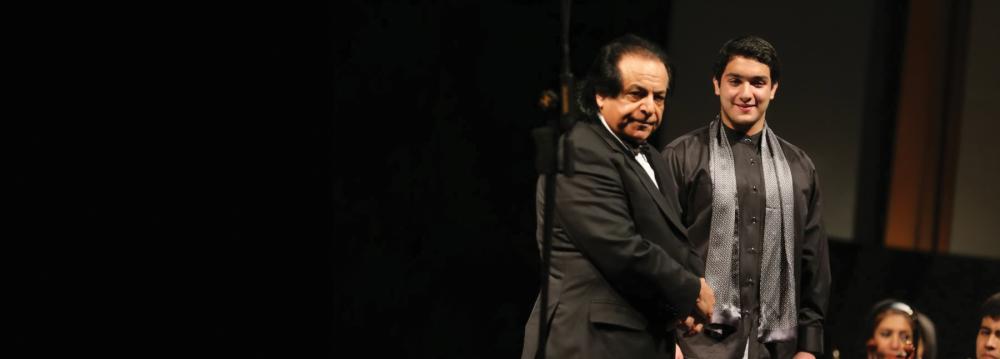In honor of the renowned Iranian wrestler Gholamreza Takhti (1930-1968), the Prague City Philharmonic Orchestra performed a symphonic poem recital recently.
The orchestra was conducted by Iranian composer and conductor Ali (Alexander) Rahbari, 69, who has worked with over 120 European orchestras, according to musiceiranian.ir, a news website on Iranian music.
The orchestral music was composed by the young pianist and composer Pourya Khadem, 17, son of Rasoul Khadem, 44, the Iranian wrestler who won a gold medal in the 1996 Summer Olympics, and a bronze in the 1992 event.
Although Rasoul was trained by his father Mohammad Khadem, 82, in wrestling, he did not encourage his son Pourya to enter the sport. Instead, he sat him down behind the piano when he was just five years old to learn music. And he did learn, both Iranian and classical styles.
“I grew up in an environment influenced by wrestling culture and the heroic sport of ‘pahlevani’ (inscribed by UNESCO). So I was perhaps more exposed to such an atmosphere than others. Takhti was always mentioned in our life. His friends had close ties with our family.”
Eventually, Pourya acquired an understanding of Takhti’s character and composed the album titled ‘Takhti Symphonic Poem’ in which “I have tried to introduce him in my own way,” he said.
The album was unveiled on Saturday at the Persian Gulf Hall of Niavaran Cultural Center in Tehran.
Vocalist of the album is Iranian traditional singer and ney player Mohammad Motamedi, 38. The recording of the work was done at Smecky Music Studio in Prague, capital of the Czech Republic. The recording sessions were conducted under the executive management of Barbad Bayat, composer, arranger, player of trumpet and santur.
It comprises of four movements (self-contained part of a musical composition or musical form).
“The first renders Takhti in a mythological sense; the second highlights his championship in the wrestling world and in the third, Takhti’s social image and his humble attitude which made him a popular hero, is portrayed.
“But the fourth or final movement is a requiem for his demise,” Pourya said.


